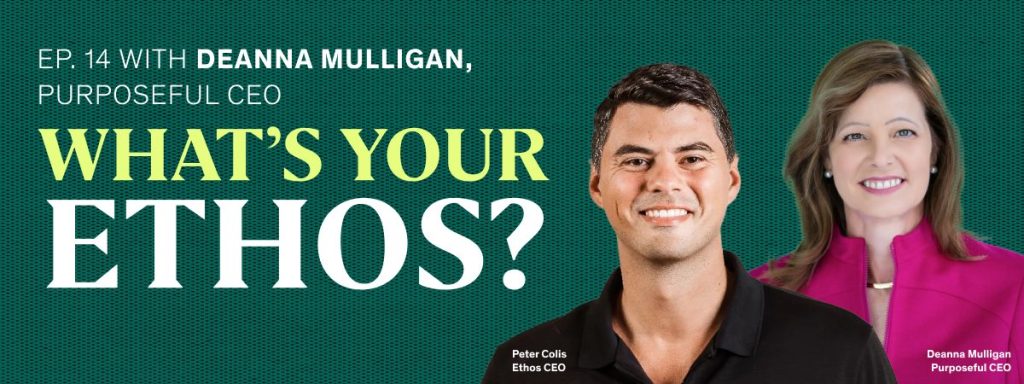McDermott’s Insurtech Summit 2.0

McDermott’s second insurtech summit took place on June 15th. To quote James Riviezzo, “smart views were on display – both inside and out.” The event’s tone was set by Michael Halsband, who led an investor-centric discussion highlighting areas where the sector continues to grow and evolve and was concluded with Mike Byrne, who drew nuggets from Chubb, Embedded Insurance, Vouch and Allianz Partners on what works best in embedded insurance. The deliberately un-themed gathering swiftly shifted to a discussion about insurtech 2.0.
At the occasion, Jefferies’ Kegan Greene, managing director and head of insurance technology investment banking, spoke and noted that insurance is only one part of the financial services industry and the last to go digital. “History will repeat itself,” asserts Greene, pointing to the parallels between the previous wave of lending businesses and insurance startups when compared to incumbents. “Fast forward, you have publicly traded insurance technology companies that have all raised an incredible amount of venture capital at a high valuation, but many have a terrible combined ratio and now the market is correctly judging these businesses for what they are.”
* * *
If you thought that all insurance companies would become insurtechs, you were wrong. It’s the other way around. “A mindset, an approach, a way of dealing with something” was the definition for insurtech shared by Coverager back in Jan 2018 during the AMA Risk and Insurance Council. “Most battles are won in the mind.”
The movement was alive and kicking back then. XL Innovate was an insurtech company. Verisk still is an insurtech company. bolttech is Pacific Century Group’s global insurtech platform, and Deutsche Familienversicherung still “is the only functioning Insurtech on the German market.”
The movement took a beating. According to Google Trends, the term “insurtech” peaked in popularity in the US in December 2019 and is only half as popular today. Overall, the discussion has changed from insuretech versus insurtech to insurance versus insurtech; suggesting that insurtech has lost some mindshare but that it has also matured. Insurtech 2.0 was used at the summit to highlight profitable growth and increased customer value, and it is impossible to argue against these sound business principles, except to say, they are sustainable but not so different.
Lior Prosor, the founding partner of Hanaco Ventures, once said that insurtech 2.0 will not be about consumer-facing companies: “We believe the next multi-billion dollar insurtech companies will not be new consumer brands like generation 1.0, but rather solutions that transform the industry’s current manual back-end processes into streamlined digital solutions.” In layman’s terms, every business implementing new procedures and modern technology qualifies as an insurtech 2.0 company, and that undermines the exclusivity of the movement. In other words, insurtech not only lost mindshare, but also its hip appeal, if you are to accept this definition.
“Looking ahead to 2023, the “insurtech 2.0” landscape will continue to mature, with companies focusing more on profitability and honing in on areas with the biggest gap between customer needs and current capabilities,” said Madhu Tadikonda, the CEO of Corvus Insurance, back in Dec 2022. “An insurtech 2.0 approach will leverage the data and technology to properly assess and price risk and even go beyond the insurance application to help proactively mitigate risk for policyholders.” A month later, the commercial lines MGA conducted a round of layoffs that impacted around 14% of the company; after all, one fast approach to reduce costs is through layoffs. Properly assessing and pricing risk is certainly the foundation of good unit economics but a tricker skill set to master. “The thing that Branch does differently is charge an appropriate amount to cover the costs of running each policy,” Steve Lekas told TechCrunch a year ago. “We have a price and a model that no one else can replicate at this stage. And so we’re trying to double down on it and get to scale quickly in all 51 states…The funny thing is, even though we’re four years younger than the insurtechs that preceded us, I think we’ll be the first one to get to cash flow positive by a stretch.” 186 Branch employees were laid off a year later, and nobody is laughing now.
“Insurtech 1.0 only focused on the “now” of doing business, while insurtech 2.0 is about using technology to improve the future. It’s about leveraging AI and machine learning to predict trends and behaviors before they happen, and actually leveraging that data to improve safety, reduce risk, and reduce cost,” described Daniel Abrahamsen, the co-founder and CEO of Cover Whale, a trucking insurance startup. “For instance, at Cover Whale, we’re not just monitoring telematics and providing a better premium when a policy is due for renewal. Our technology is analyzing behavior from behind the wheel and alerting our insureds of coachable moments; things like speeding or frequent sudden braking.” Like Cover Whale, Fairmatic also claims that it’s an insurtech 2.0 company. Both Cover Whale and Fairmatic provide driving tips to help fleets improve safety. Particularly, they both lag much behind Tesla that uses its in-vehicle camera to discipline drivers who aren’t paying attention when using the full-self driving feature (as an aside, such a tactic may be useful in Tesla’s insurance business).
“Insurtech 2.0 recognizes the innovators who came before but takes a more nuanced and collaborative approach to disruption,” according to Ian White, the co-founder and CEO of Koffie, a trucking insurtech company in the process of adding a fintech angle. However, if a startup sets out to combat (read: zero commission, 100% fair, flexible insurance) and ends up collaborating (see: Lemonade working with agents, Root dropping UBI within its Carvana channel) that isn’t progression but rather, regression.
What if the startup set out to collaborate from the get-go?
Well then, you’re AP Intego.
Three years ago, a moderator suggested to Steve Hauck, the co-founder of AP Intego, now Next Connect, that “AP Intego might not necessarily be insurtech” because the broker also employs 50 agents and 60 customer service reps. However, AP Intego, according to Next Insurance, was one of the nation’s fastest growing insurtech companies, when it announced its 2021 acquisition.
“It’s a stupid name,” shared Hauck at this year’s McDermott’s event, commenting on the name AP Intego. Thing is, the name didn’t matter as Hauck built a ‘behind-the-scenes’ operation positioned to serve the customers of his customers. After all, it matters less what you call yourself and it matters more what you respond to.
* * *
According to Greene, VCs are now responding more favorably to SaaS startups and B2B-type enablers than to those businesses (think: Lemonade, Hippo) that promised disruption. In the end, nobody ever asked for the Uber of insurance, and if they do, it will be Uber because it has an insurance division, which brings us back to the recently popular subject of embedded insurance.
John Fees, the co-founder and CEO of GradGuard, shared his perspective from afar. “I sadly see too many irrelevant “up-sell” offers or “opt-out” programs that seem to be more about driving revenues per customer than fulfilling a real insurance need. In my opinion, the temptation by many to maximize the value for themselves vs. the value they create for their customers is treacherous and will invite greater regulatory scrutiny of all of our activities.” Embedded insurance has proved to be the hottest tactic, but some will get burned.
The best way to put it was how Greene put it: “You have to look at each and every business one by one and see the winners and losers,” coming to the conclusion that there will be a new generation of better, stronger insurance businesses that will get it right, but they must first raise the bar.


